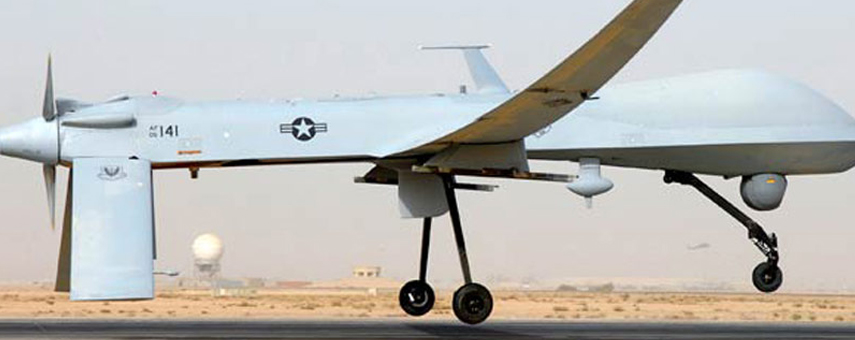The recent spike in Drone strikes in Pakistan’s Federally Administered Tribal Areas (FATA) has again given fuel to the infamous drone debate and Pakistan’s tacit agreement on intelligence sharing with the CIA and the US.
It was just a few months ago that Peter Bergen, a US expert on Drones, had revealed that the US drone campaign in Pakistan may have finally come to an end.
Not only Bergen, but Pakistan’s foreign office, representing the current Nawaz led PML N government, boasted of lobbying against drones and convincing the Obama administration to halt these strikes.
These reports also carried weight as 2014 witnessed no strikes till June. It was on June 11 when a predator drone targeted the Islamic Movement of Uzbekistan (IMU) and the local Taliban in Dargah Mandi, North Waziristan, raising speculations of a possible US-Pak joint strike seeking vengeance from the IMU for their role in the Karachi airport attack on June 8.
Furthermore, the current spree of predator strikes in FATA has further negated any possible cessation of drone strikes. A total of 16 drone strikes since June this year, have allegedly killed close to 110 people, all of whom were tagged as militants by the media.
According to Bergen’s New America Foundation, the US has conducted a total of 384 drone strikes killing more than 3500 people – most were reported to be militants. Moreover, these strikes have also been clinical in eliminating more than fifty Al Qaeda, Taliban and Haqqani network leaders – including two heads of the notorious Tehrik e Taliban Pakistan (TTP).
But even with their “apparent” success and effectiveness, the Drone strikes in Pakistan are generally regarded as illegal and in violation of the country’s sovereignty.
Pakistan, along with international human rights organizations, has called these strikes as illegal and illegitimate. In October 2013, the Chief Justice of Peshawar High Court issued a judgment on the drone attacks. Justice Dost Muhammad Khan, while hearing a case against drones, called the drones illegal and violation of Pakistan’s sovereignty.
The United States has, time and again, categorically denied such claims.
Harold Koh, the United States State Department legal advisor, during his speech at the American Society of the International Law annual meeting, justified the drone strikes and called them in compliance with all forms of laws, including the laws of war. Furthermore, officials from the US State Department have also denied the claims that the US is violating any international law while conducting its drone strikes. The US narrative was backed by memos and documents obtained from Pakistan and CIA, according to which more than 60 attacks between 2007 and 2011 were carried out with mutual consent of Pakistan.
With an ongoing military offensive, and Pakistan’s apparent silence over previous nine drone strikes, one could conclude that the government may not only have a tacit Drone agreement with the US, but may also be involved in active intelligence sharing to target militants.
These developments, shocking for many, also come on the back of a decade long protest by Pakistani officials and the politicians against the strikes who blamed them for accelerating militant recruitment and growing sentiment of anti-Americanism in the country.
Gen. Asim Bajwa, of the ISPR, recently told the BBC that operation Zarb e Azb – started in June – was a success and that the military now had a firm hold on the undertaking. He claimed that the military had killed more than 1000 suspected terrorists, many of which included second tier leaders of the TTP. On the other hand, the military has also been successful in keeping a low casualty rate of its own personnel – mostly because of the use of sophisticated technology such as fighter jets.
What now needs to be seen is how the TTP leaders, allegedly fleeing to neighboring Afghanistan, will regroup, recruit and reorganize against the Pakistani military. Only time will tell, whether this silence from the TTP is momentary or permanent. And with six top TTP leaders pleading allegiance to ISIS and Al Baghdadi, it may also seem that TTP, and other local militant splinters, may be looking to move to newer and greener pastures in the Middle East.
But more importantly, will this latest string of drone strikes dictate a new path for the Pakistani military establishment and the intelligence agencies in their dealing with Drone issue on a socio-political level? Can Drones become the best used counter terror tool rather than a worst kept secret? Only time will tell.
Farooq Yousaf, CRSS Research Associate

